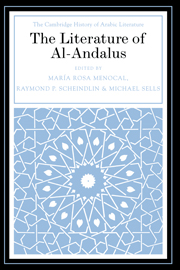2 - Language
from PART I - THE SHAPES OF CULTURE
Published online by Cambridge University Press: 28 May 2012
Summary
No sooner had the expulsion decree of 1609 stripped Spain of its last Muslim inhabitants, the Moriscos, than the vicar-general of the Valencia cathedral wrote exultantly to King Philip III: “Hago gracias a Dios que en Valencia ya no se siente hablar en lengua aráviga” [I thank God that we no longer hear Arabic spoken in Valencia] (Fuster 113). Exactly nine hundred years had passed since Arabic had first been brought to the country’s shores by the Muslim conquest of 711. During those centuries the Iberian Peninsula was home to Romance, Arabic, and Hebrew, languages both European and Semitic; to rural, urban, and regional dialects; to writing and untutored speech; to registers and styles suited to court and home, to cathedral, mosque, and synagogue, to harem, battlefield, countinghouse, wineshop, and farm. Any attempt to draw the peninsula’s linguistic portrait not only must comprehend the complexities inherent in all multilingual societies, but must do so over a vast span of time, during which the fortunes of Iberia’s languages rose, fell, and changed together with those of her people.
To a great extent all the major languages of the peninsula followed their own chronologies of development, but the historical events that brought their speakers together could alter this natural evolution. Contacts between peoples acted on the languages themselves, as when vocabulary and structures were borrowed from one to another; or they affected literary expression, as when Romance popular songs inspired new forms of Arabic verse, and Hebrew poetry remodeled itself on Arabic. The social and cultural roles assigned to languages also changed: forms of speech once prestigious grew isolated and were stigmatized; language shifted from a marker of ethnicity to one of religious affiliation. As happens everywhere that languages are in contact, linguistic phenomena in Spain were intimately entwined with political and demographic movements.
- Type
- Chapter
- Information
- The Literature of Al-Andalus , pp. 31 - 59Publisher: Cambridge University PressPrint publication year: 2000
References
- 2
- Cited by



